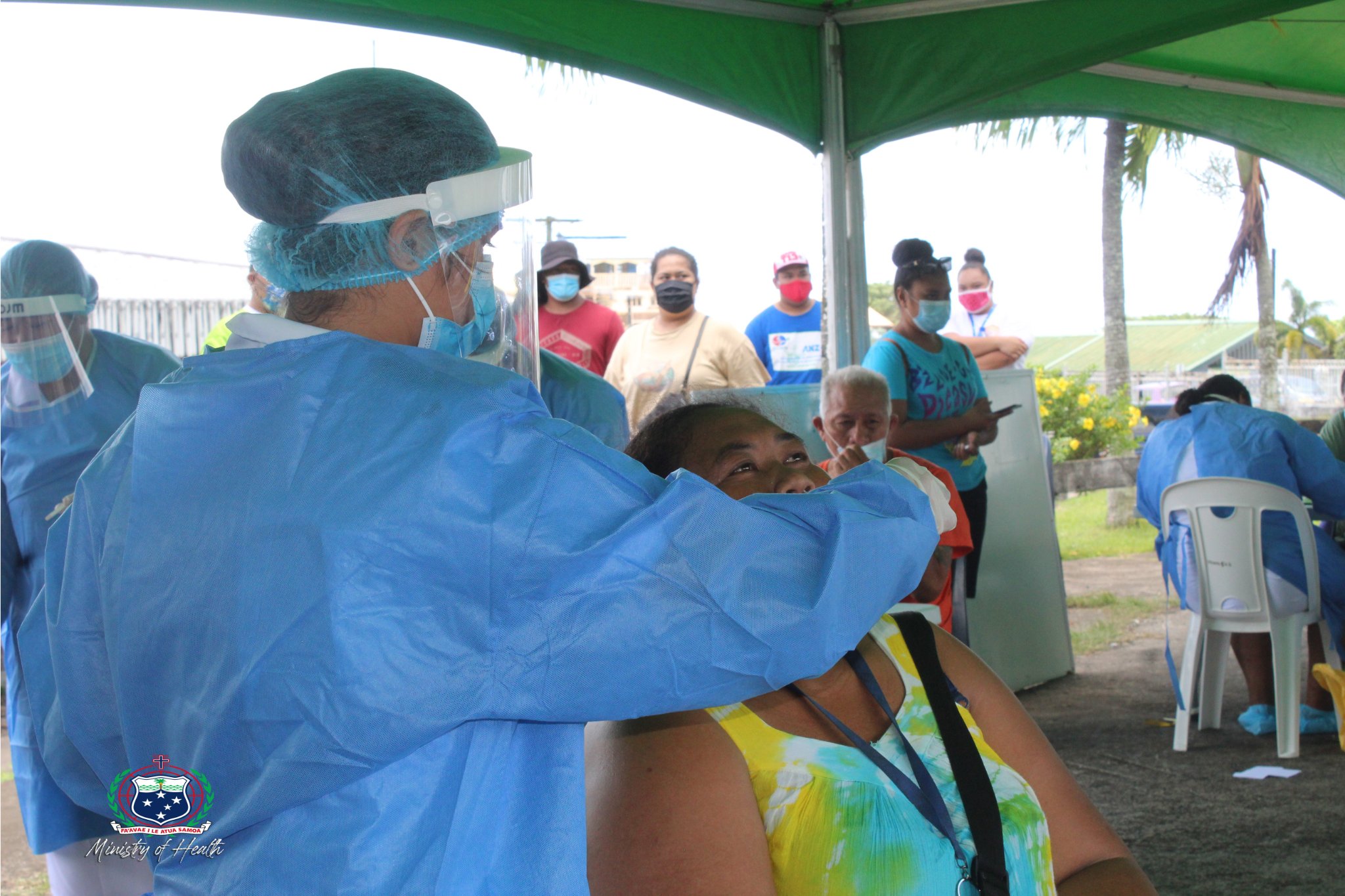Samoa’s total number of active COVID-19 cases has increased to 196, with the government confirming 192 cases in Upolu and four cases in Savai’i.
The Government Press Secretariat’s community transmission update has advised that health authorities had identified 85 new community cases by 2pm Sunday.
The new community cases when added to the 15 imported active cases, pushes Samoa’s total active cases to 196.
The Ministry of Health (MOH) confirmed that a total of 2,207 tests were carried out since 18 March 2022 in six designated COVID-19 screening sites, in addition to tests conducted at health facilities.
Out of the 181 active community cases reported, 62 positive cases were confirmed from the six screening sites with 119 cases confirmed in health facilities.
The Red Cross Headquarters at Tuanaimato screening site has so far recorded the highest percentage of positive cases at 47% of total COVID-19 positive cases confirmed, according to the Press Secretariat.
The MOH has also identified 428 close contacts who are currently under investigation.
A summary of the statistics provided by the Press Secretariat is that there are 192 active cases in Upolu and four in Savai’i, with both Manono-Tai and Apolima-Tai still recording zero cases since the first community case was recorded last Thursday.
Current active imported cases stand at 15 (including three frontline workers); active community cases total 181; while those currently in the isolation ward at the Tupua Tamasese Meaole National Hospital at Moto’otua total 11.
The number of community cases is expected to increase following the detection of the country’s first community case last Thursday. The authorities are yet to ascertain where the individual picked up the infection from.
On Saturday the MOH uploaded an instructional video on its official Facebook page to show families how they can safely manage home isolation for a family member who tested positive for COVID-19 in their own homes.
The instructional video confirmed Samoa’s health apparatus is beginning to feel the impact of the rise in COVID-19 cases and now sees home isolation as an alternative to managed isolation in hospitals.
Lalomanu district hospital’s first community case, which was recorded on Saturday when a man went in and got tested to return positive results, is now in isolation at home with his family. Staff at the district hospital told the Samoa Observer that he got sick and began to show symptoms of COVID-19 after his return to the village from Apia the previous weekend.
Samoa and several neighbouring Pacific island nations were among the last places on earth to remain COVID-free.
But the more transmissible Omicron variant has changed the equation, and one by one the island nations have been succumbing to the virus.
Since the start of the year, Kiribati, Tonga, the Solomon Islands, the Cook Islands and American Samoa have all experienced their first big outbreaks.
From midnight on Saturday, all of Samoa’s schools were closed, public gatherings were banned, and all stores and other services were shut down, except those considered essential. From midnight on Friday, people were required to wear masks and use vaccination cards.
There were reports Friday of panic-buying ahead of the lockdown.
Samoa’s Prime Minister Fiame Naomi Mata’afa told people about the positive case in a special announcement to the nation late Thursday. She said the infected woman was in isolation and that her movements and contacts with people were being traced.
Mata’afa said officials wanted to do all they could to contain it from spreading rapidly.
“Although our country continues to traverse through these difficult times, let us continue to trust in the Lord,” Mata’afa said in her announcement.
Samoa has had previous virus scares and lockdowns after returning plane passengers tested positive while isolating, but had managed to avoid any community outbreaks until now.
Micronesia, the Marshall Islands and Nauru are among the few remaining Pacific island nations to have avoided Omicron outbreaks.

One Comment “WHO: Pacific islands facing a bumpy road toward the ‘Healthy Islands’ vision”
Comments are closed.